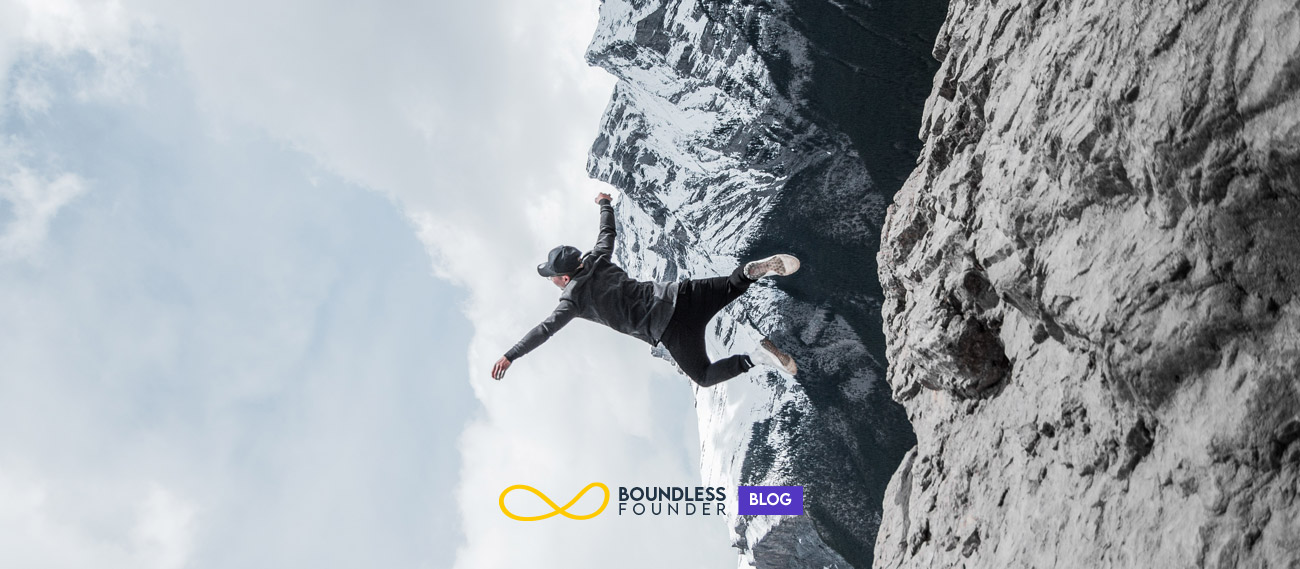In January 2021, the possibility of a life-changing acquisition dangled before us—a multibillion-dollar company was keen on buying us out. The anticipation was electric; I was confident and buoyed by our strong rapport with their CEO and leadership team. Every meeting felt like a step closer to the finish line, and as we delved deeper into due diligence, my team and I laid bare every corner of our startup.
Then, just two hours before the final contract was signed, everything unraveled. The call came in, shattering the calm I had begun to take for granted. Their voice was almost apologetic, but the words hit like a hammer: “We have to back out.” My heart raced as they explained that another, more prominent company had made them an offer they couldn’t refuse. With their freshly inked letter of intent (LOI), our deal was dead in the water.
At that moment, time seemed to freeze. Just a few years earlier, such a blow would have devastated me. I would have shut down the company, convinced that this failure marked the end. Even our investors hinted that we should consider winding down.
But instead of despair, I felt a quiet, steely resolve taking hold. Within 24 hours, I was back on my feet. I took the LOI they had given us and began shopping it around for other potential buyers. Within days, we had five new introductions, and a few months later, we sold the startup in a deal that far exceeded our original expectations.
What had changed? How could I bounce back so quickly from what would have previously been a business-ending blow?
The answer lies in two distinct but complementary qualities I had developed over years of entrepreneurial challenge: mental robustness and resilience.
Understanding the Difference: Robustness vs. Resilience
Most entrepreneurs use terms like “mental toughness” or “mental strength” interchangeably, but my journey has taught me that these are two separate qualities. Understanding this distinction is critical for your development as a founder.
Mental robustness is your ability to withstand challenges without breaking your mental state. It’s about maintaining equilibrium in disruption—staying centered when the world is in chaos.
Mental resilience, on the other hand, is your ability to recover quickly when your mental state has been knocked off balance. It’s about bouncing back after a fall—finding your center again after losing it.
Think of robustness as a bridge designed to withstand an earthquake, while resilience is the bridge’s ability to quickly return to its original state after being deformed by the quake.
In my early days as an entrepreneur, I possessed neither quality in abundance. The slightest disruption could throw me into an emotional tailspin that lasted for days or weeks. A critical email from an investor, a key employee’s resignation, or a significant product bug could completely derail my mental state.
I had developed both qualities by the time of that failed acquisition in 2021. The initial shock still affected me—that’s natural and human—but my robustness limited the impact, and my resilience enabled a rapid recovery. Instead of weeks of paralysis, I experienced hours of processing followed by decisive action.

Why Entrepreneurs Need Both Qualities
The entrepreneurial journey isn’t for the faint of heart. According to a study from the University of California, Berkeley, 72% of entrepreneurs report mental health concerns. This isn’t surprising when you consider what founders face daily:
- Constant uncertainty and risk
- Regular rejection and criticism
- High-stakes decision-making with limited information
- Responsibility for employees’ livelihoods
- The ever-present possibility of failure
In this environment, mental robustness helps you stay functional during the storm. Without it, minor setbacks become major crises, and your decision-making deteriorates precisely when you need it most.
Meanwhile, resilience ensures that when you do get knocked down—and you will—you don’t stay down. It prevents temporary failures from becoming permanent and transforms potential business-ending events into mere chapters in your longer journey.
Building Mental Robustness: Staying Strong in the Storm
In the first two years of my startup, I struggled with mental robustness. My co-founder described asking me for something as “rolling dice”—my reaction could swing wildly depending on what else was happening that day. Small issues sometimes drove me crazy, while at other times, I would accept major setbacks with apparent equanimity.
Through deliberate practice and painful experience, I developed strategies to build greater mental robustness:
1. Establish Your “Why” and Revisit It Regularly
Your sense of purpose is your North Star. In the darkest moments, it will keep you oriented and moving forward.
The breakthrough came when I shifted from seeing my startup as primarily about personal achievement to viewing it as a vehicle for positive impact. I promised myself that regardless of business results, I would make the startup journey the best possible experience for everyone involved, including my team members.
This shift in perspective gave me a foundation that wasn’t tied to metrics or milestones. When business challenges arose, they no longer threatened my core purpose.
Action step: Write your entrepreneurial purpose statement, focusing on impact rather than outcomes. Review it weekly, especially before high-stress events.
2. Train Your Thought-Monitoring System
Mental robustness requires awareness of your thought patterns. You can’t manage what you don’t measure.
I developed a simple practice of pausing throughout the day to ask myself:
- “What am I thinking right now?”
- “How are these thoughts affecting my emotions?”
- “Are these thoughts based on facts or assumptions?”
This practice helped me catch negative thought spirals before they gained momentum. Over time, I became more adept at distinguishing between objective reality and my interpretations of events.
Action step: Set three daily alarms as “thought check” reminders. When they sound, pause and assess your current thought patterns.
Most entrepreneurs wait until they’re already overwhelmed before implementing stress management techniques. By then, it’s often too late.
I learned to build stress management into my daily routine as prevention rather than treatment. My non-negotiable practices included:
- 20 minutes of morning meditation
- 30 minutes of physical exercise
- Technology-free evenings before sleep
- Weekly complete disconnection from work
These practices strengthened my mental “immune system,” making me less susceptible to stress-induced mental state changes.
Action step: Identify one daily and one weekly stress management practice. Schedule them in your calendar with the same priority as your most important meetings.

Building Resilience: Bouncing Back from Setbacks
While robustness helps you withstand challenges, resilience enables you to recover when your mental state has been disrupted. In my entrepreneurial journey, I’ve had to develop both.
In my first failed acquisition attempt, I was devastated for weeks. In contrast, when our second acquisition attempt fell through just hours before signing, I was back on my feet within 24 hours, actively pursuing alternatives. Here’s what changed:
1. Develop a Recovery Protocol
Athletes have detailed recovery protocols for physical injuries. Entrepreneurs need something similar for psychological setbacks.
After experiencing several significant disappointments, I created my personal recovery protocol:
- 24 hours to feel the emotions fully (no suppression)
- Physical activity to process the emotional energy
- Talking with a trusted confidant outside the business
- Written reflection to extract lessons
- Reorientation to current opportunities
Having this protocol meant I didn’t have to figure out what to do while in an emotional state—I just followed the steps.
Action step: Create your 5-step recovery protocol and share it with a trusted person who can remind you to implement it when needed.
2. Build Perspective Through Regular Reflection
Resilience thrives on perspective—the ability to see setbacks within the context of your broader journey.
I implemented a weekly reflection practice every Sunday evening, asking:
- What challenges did I face this week?
- How did I respond?
- What did I learn?
- How does this fit into my longer journey?
This regular zooming out helped me develop what I call “emotional time travel”—the ability to mentally transport myself to a future point where today’s crisis is just a memory and a lesson.
Action step: Schedule a 30-minute weekly reflection session. Use the four questions above to build you strengthen your perspective
3. Create a Robust Support System
No entrepreneur is an island. Resilience is significantly enhanced by having the right support network.
I learned to be strategic about building my support system, identifying different roles I needed:
- A mentor for wisdom and perspective
- Peer founders for empathy and shared experience
- A coach for accountability and development
- Family/friends for unconditional support
When our acquisition fell through, I immediately activated this network, calling my mentor for strategic advice and connecting with fellow founders who had survived similar experiences.
Action step: Map your current support network. Identify gaps and make a plan to fill them with specific individuals.

The Interplay Between Robustness and Resilience
While robustness and resilience are distinct qualities, they reinforce each other in powerful ways:
- Greater robustness means fewer resilience challenges. The more you can withstand without being knocked off-center, the less often you’ll need to bounce back.
- Stronger resilience means faster recovery to robustness. The more efficiently you can recover, the more time you’ll spend in a mentally robust state.
- Both qualities improve with deliberate practice. Each challenge is an opportunity to strengthen one’s ability to withstand pressure and recover from disruption.
In my journey, I’ve found that building these twin pillars of mental strength didn’t just improve my business outcomes—it transformed the quality of my entrepreneurial experience. Challenges that once would have derailed me for weeks became manageable events I could navigate with relative calm.
The failed acquisition I described at the beginning of this article wasn’t just a business test—it was a testament to my developed mental strength. The same event that might have ended my entrepreneurial journey years earlier became a stepping stone to more tremendous success.
Measuring Your Progress
How do you know if you’re developing mental robustness and resilience? Here are some indicators I’ve observed in my journey:
Signs of increasing robustness:
- Fewer emotional swings in response to daily challenges
- More consistent decision-making quality under pressure
- Less reactivity to criticism or setbacks
- Improved sleep and physical well-being during stressful periods
Signs of increasing resilience:
- Shorter recovery time after significant setbacks
- Greater ability to extract lessons from failures
- More willingness to take calculated risks despite past disappointments
- Increased capacity to support others during team challenges
The ultimate measure is not the absence of struggle—entrepreneurship will always be challenging—but your relationship with those challenges. Do they control you, or do you navigate them with increasing skill?
The Entrepreneur's Mental Training Plan
If you’re convinced of the importance of developing these twin pillars of mental strength, here’s a simple 30-day training plan to get started:
Week 1: Assessment
- Day 1-2: Document your current response patterns to challenges
- Day 3-4: Identify your common mental triggers and patterns
- Day 5-7: Create baseline measurements for mental well-being
Week 2: Robustness Foundations
- Day 8-10: Establish your purpose statement and daily review
- Day 11-12: Implement thought monitoring practices
- Day 13-14: Design your stress prevention routine
Week 3: Resilience Foundations
- Day 15-17: Create your personal recovery protocol
- Day 18-19: Establish weekly reflection practice
- Day 20-21: Map and expand your support network
Week 4: Integration
- Day 22-24: Practice applying tools to real challenges
- Day 25-28: Adjust practices based on results
- Day 29-30: Create your ongoing mental strength plan
Remember, mental strength is like physical strength—it develops through consistent training, not overnight transformation. The entrepreneurs who succeed long-term are often not those with the best ideas or the most funding but those who have developed the mental robustness to withstand daily challenges and the resilience to bounce back from inevitable setbacks.
As I discovered in my journey, these qualities are not fixed traits but skills that can be developed with deliberate practice. The failed acquisition that could have broken me became instead one of my proudest entrepreneurial moments—not because of the business outcome but because it demonstrated how far I had come in building mental strength.
The unpredictable world of entrepreneurship will always throw challenges your way. With robustness, you’ll withstand more of them. With resilience, you’ll recover faster from the ones that knock you down. Together, these twin pillars will support your business success and your personal growth throughout the entrepreneurial journey.
Want to explore the deeper aspects of building entrepreneurial mental resilience and robustness? The Inside-Out Entrepreneur provides a comprehensive framework for developing the mental, emotional, and spiritual conditioning needed to thrive in the unpredictable world of startups. You can purchase the book on Amazon.











Responses